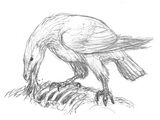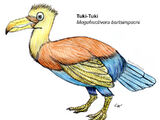No edit summary Tag: rte-wysiwyg |
(Adding categories) |
||
| Line 1: | Line 1: | ||
Enantiornithes were the most abundant and diverse group of avialans ("birds" in the broad sense) during the Early to Late Cretaceous period of the Mesozoic Era. Almost all retained teeth and clawed fingers on each wing, but otherwise looked much like modern birds externally. Over 50 species of Enantiornithines have been named, but some names represent only single bones, so it is likely that not all are valid. Enantiornithes became extinct at the Cretaceous–Paleogene boundary because of the Cretaceous-Paleogene Extinction Event, along with hesperornithids and all non-avian dinosaurs, and many other groups. Enantiornithes are thought to have left no living descendants. |
Enantiornithes were the most abundant and diverse group of avialans ("birds" in the broad sense) during the Early to Late Cretaceous period of the Mesozoic Era. Almost all retained teeth and clawed fingers on each wing, but otherwise looked much like modern birds externally. Over 50 species of Enantiornithines have been named, but some names represent only single bones, so it is likely that not all are valid. Enantiornithes became extinct at the Cretaceous–Paleogene boundary because of the Cretaceous-Paleogene Extinction Event, along with hesperornithids and all non-avian dinosaurs, and many other groups. Enantiornithes are thought to have left no living descendants. |
||
[[Category:Theropods]] |
[[Category:Theropods]] |
||
| + | [[Category:Birds]] |
||
Revision as of 08:26, 21 July 2019
Enantiornithes were the most abundant and diverse group of avialans ("birds" in the broad sense) during the Early to Late Cretaceous period of the Mesozoic Era. Almost all retained teeth and clawed fingers on each wing, but otherwise looked much like modern birds externally. Over 50 species of Enantiornithines have been named, but some names represent only single bones, so it is likely that not all are valid. Enantiornithes became extinct at the Cretaceous–Paleogene boundary because of the Cretaceous-Paleogene Extinction Event, along with hesperornithids and all non-avian dinosaurs, and many other groups. Enantiornithes are thought to have left no living descendants.
Trending pages
-

Spec Dinosauria: Avisauridae -

Spec Dinosauria: Allocolumbiformes -

Spec Dinosauria: Allospiziformes -

Spec Dinosauria: Enantiornithes -

Spec Dinosauria: Pseudoraptoridae
All items (6)





